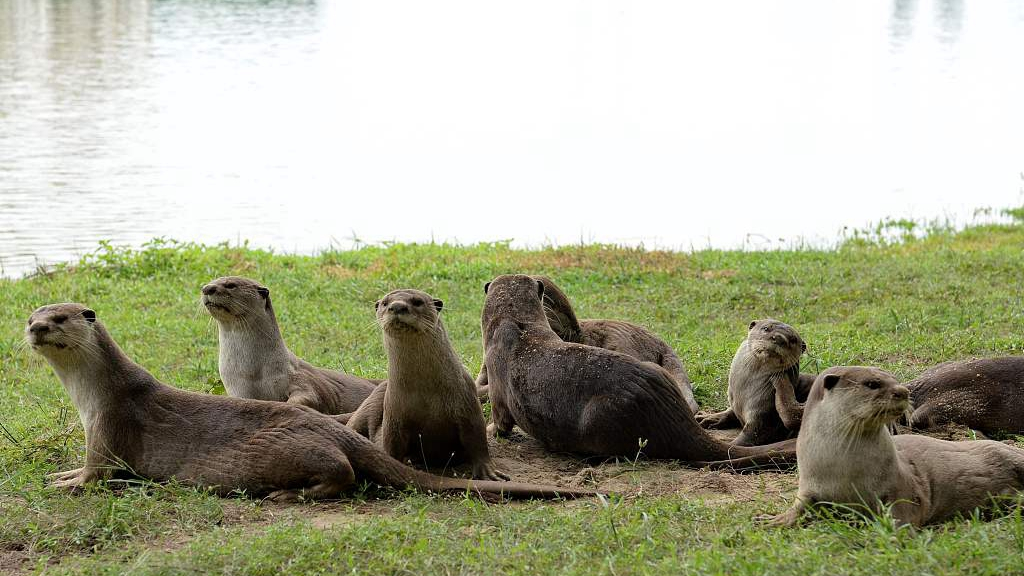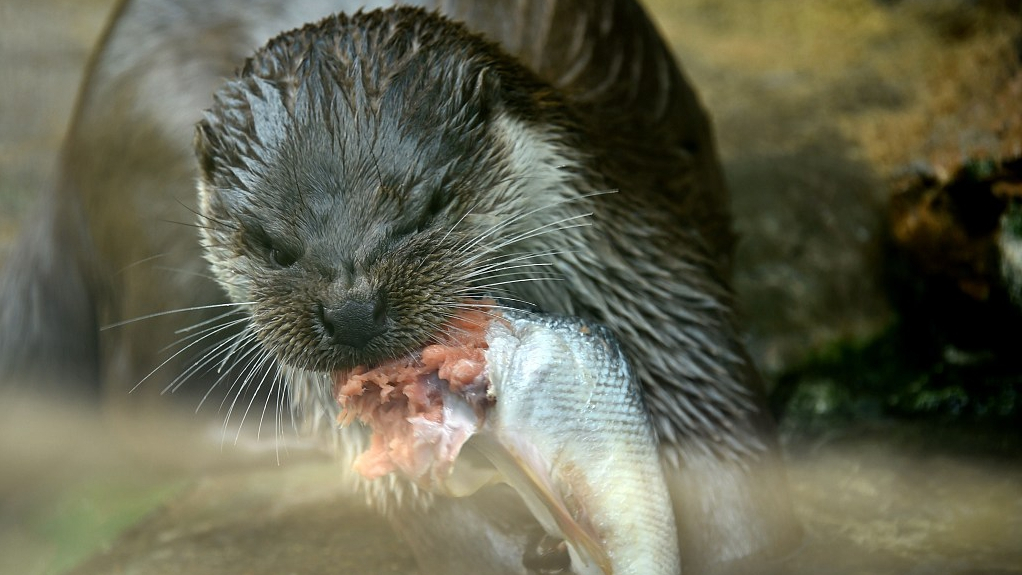
Animal
14:14, 12-Feb-2019
The story of vulnerable otters
By Zhang Hao

The video of a group of otter pups on their first city trip in Singapore captured the hearts of tens of thousands of viewers after it went viral earlier this year. Since then, otters have become somewhat of an Internet meme.
But this sudden fame, so to speak, should not cloud sad stories surrounding this species and its pressing need for protection.

Wild otters gather on the beach along Kallang basin in Singapore. /VCG Photo
Wild otters gather on the beach along Kallang basin in Singapore. /VCG Photo
Among 13 species of otters, China used to have three – Lutra lutra (Eurasian otter), Aonyx cinereus (short-clawed otter) and Lutrogale perspicillata (smooth-coated otter) – which used to widely cover most parts of China due to their strong adaptability.
But their numbers have plummeted by astonishing 91 to 99 percent since the 1950s given the fashion value of their fur.
The smooth-coated otter has not been seen In China since its last record of appearance near the border in southwestern Yunnan Province in 1980.
China is not alone. Otters almost disappeared in Singapore with the expansion of urbanization in the 1970s and 1980s. The harmony between otters and city dwellers was generally absent until 1998, when a pair of the animals swam all the way from Malaysia through Straits of Johor in seek of a new home at a protected wetland in Singapore. More than 20 years later, repeated appearances of large numbers of otters are testimony to the species' revival.
It's not easy to resist the temptation of petting and caressing the otter's round smooth head as it emerges from a rock gap or a napping pup on the belly of its mother floating on the water carefree. But it will be very easy to understand how ruthless they are when preying on or scaring away a 3-meter long crocodile. Even so, it won't stop the smuggling of otters because of the growing need to keep otters as pets. An otter pup could be worth 1,000 US dollars in Japan.

A Eurasian otter eats a fish in Moscow Zoo. /VCG Photo
A Eurasian otter eats a fish in Moscow Zoo. /VCG Photo
Chinese scientists and wildlife protection organizations started to refocus on following up the status quo of otters in China from the early 21st century. And two-thirds of the otters in China are living in conservation areas based where they can be observed. But better late than never.

SITEMAP
Copyright © 2018 CGTN. Beijing ICP prepared NO.16065310-3
Copyright © 2018 CGTN. Beijing ICP prepared NO.16065310-3